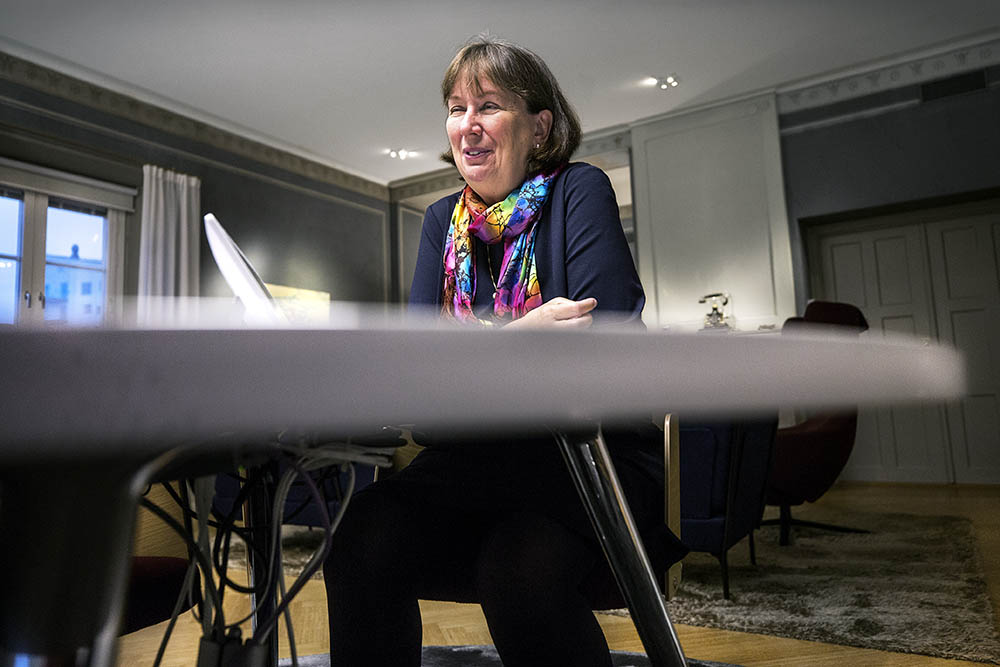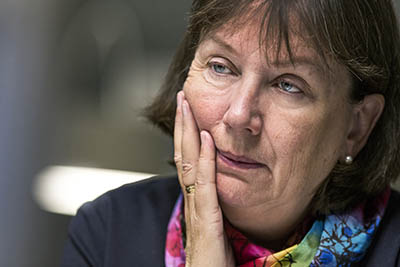
Time for the second half
Sigbritt Karlsson has completed three of her six years as President of KTH. One of the many discoveries she has made is that KTH, despite its size, can be changed.
“There's still plenty to do, naturally, but we have come a fair way along the road.”
When Karlsson receives us in the president's office on the sixth floor, it's just before eight o’clock and she's already been here for quite some time.
“I like this time of day before everything gets going. It offers a bit of time for reflection and spontaneous chats.
Plus she has a full agenda in which visits, inauguration speeches and meetings, follow straight after each other. One thing that did surprise her somewhat was the need for the presence of the president and not least, the symbolic value of this. The so-called garden gnome syndrome.
“I had probably underestimated the importance of this and what it means in such a large organisation with 5,000 employees and over 15,000 students. It's probably a case of not always so much what I have said more the fact that I was actually in attendance there.”
What are you most satisfied with, to date?
“The establishment of our four pillars; equal opportunities, sustainable development, internationalisation and digitalisation. I think they have now gained a firm foothold amongst most people and are more than just words. They have actually become an integral part of our everyday thinking.”

Karlsson also names the restructuring of the KTH schools where ten became five, almost two years ago.
“This is an extensive process that must be given the time it needs to create a common culture, but I have noticed that loads of things are happening such as interschool doctoral student projects.”
In addition, the common organisational support has been restructured and the new organisation was launched on 1 January this year and has now entered phase two.
“I can see that most people are working hard to create more efficient organisational support and a more coherent organisation. This is helping to make KTH even stronger as a whole.”
It would appear that what Karlsson is most pleased with has also been the most difficult part of her time as president. Driving change within academia is a delicate task.
“New, free thinking is the lifeblood of a university as is daring to review and test new ideas. At the same time, there can be big resistance to change for some impenetrable reason. Which can be contradictory. Perhaps it's the other side of the coin of the tremendous commitment there is here.”
Another thing she is happy with is work done on equal opportunities that, under her direction, has really taken off. This may not be seen in the statistics of appointments and number of professors yet, but awareness has increased at all levels in the organisation.
“It is incredibly important that senior management reflect on and drive these issues seriously. It must not be just for the sake of appearances.”
Sustainable development, another of her pillars, is another priority area where, for example, KTH, together with Chalmers, has developed a Climate Framework that pretty much every university has signed up to.
“We have a great deal to do and contribute to here, but based on facts and scientific methods. I’m not a believer in alarmism. That’s not a good fit with higher education. Solutions that have been systematically looked at every which way are what is needed, which is what we also convey in our programmes for engineers of the future.”
You have faced criticism for not being sufficiently visible on your home turf?
“True and I've heard the opposite, too. The job of president includes being equally visible internally and externally and to create opportunities for KTH and partnerships nationally and around the world.”
After three years in the job, she is used to hearing views on most things she does, without having asked for them.
“I don't know if it’s because I’m the first woman to hold the post, but it has made me more thick skinned.”
How does KTH research compare in terms of the global competition?
“We are doing well. We have fluctuated somewhat in the rankings, but placed seventh globally in the THE Impact ranking linked to the global goals for sustainable development.”
What are your plans for your next three years?
“To consolidate and strengthen the change work we have implemented so far, quality work, but also to develop a learning environment where lifelong learning is part of our task – but we must share the cost of this with other partners in the public and private sectors.”
How do you envisage the future?
“I’m an optimist. With the aid of technology solutions, we will be able to meet many of the social challenges we face today. However, an increasingly undemocratic situation in the world, can concern me.”
Time for the next meeting.
Jill Klackenberg